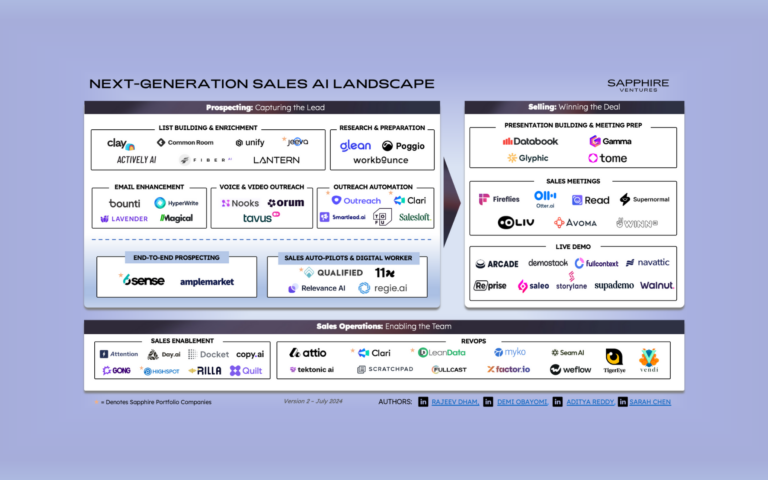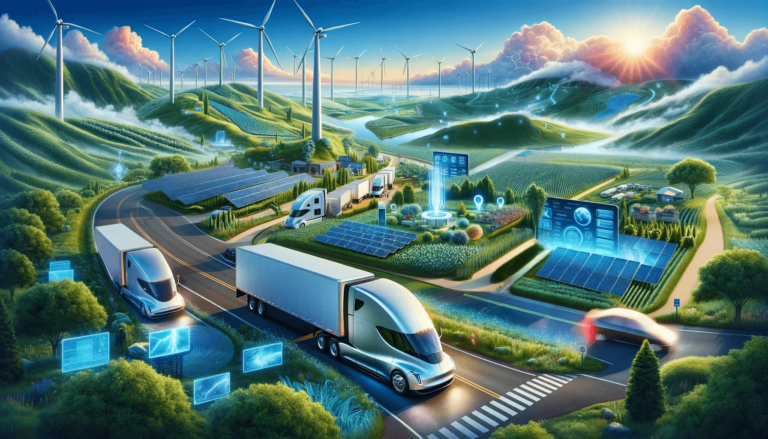As we reflect on another year and think about what’s to come, it’s easy to see that a lot has occurred in a small amount of time. The pandemic took center stage, but the technology industry also leapt to the challenge of digital innovation in a big way. As a result, we’ve seen companies transform (sometimes forcibly) more quickly than before.
As the Vice President of Business Development for Sapphire based in London, I have the unique opportunity to engage with decision-makers at several European enterprises. Our recent conversations have surveyed the strategic outlook of 2022. Where will CxOs be focusing their efforts? How will the enterprise landscape evolve? And what are the biggest opportunities this year?
Coming out of discussions with leaders at companies such as Redbull, Shell and Pearson, below are what I believe to be the top 6 technology trends for European enterprises in 2022.
The Distributed Enterprise is Here to Stay

With the pandemic continuing on and new variants arising, “returning to the office” has been continuously pushed back. As more of the workforce adjusts to hybrid work, and more people become comfortable with a fully remote lifestyle, European enterprises have been forced to adapt.
Unlike the U.S., Europe is a tightly bound patchwork of countries, cultures, and languages that all rely on strong connectivity. And with a unique geography comes unique challenges. Incorporating an enterprise in every region employees chose to work meant figuring out legal employment requirements, HR benefits, local bank accounts and a myriad of other region-specific laws and regulations across Europe. As the pandemic hopefully slows in 2022, employees will return to the office, but with the infrastructure to support employees across countries now in place, remote work is here to stay.
The Great Job Vacancy Will Create a New Tech Industry
Europe is sharing the U.S. woe of the Great Resignation, albeit with a different flavor. Where Americans saw their final stimulus checks, Europeans saw an end to furlough schemes.
Hiring will continue to be a challenge in 2022. Skilled workers with industry-specific knowledge will be a hot commodity, and the burgeoning European startup scene (which saw a record of over €100B in funding) will only create more demand for high-growth companies. Enterprises, which once relied on stability as a key benefit, will have to take a page out of the startup playbook and innovate on their core value.
CxOs Prioritize ESG
Over the last decade, Corporate Social Responsibility (CSR) was widely used to define a company’s “social and environmental concerns.” But in the last year, a new term, Environmental, Social and Governance (ESG) has entered the limelight. ESG gained traction as companies began to consider social and environmental concerns core to their businesses, and not as ancillary protection. Looking forward to 2022, ESG topics like sustainability will become central to business operations. How can a company achieve net-zero? What are diversity and inclusion hiring standards? How are we handling data privacy?
In addition, European executives shared that ESG assessments will extend to the vendors they choose to do business with.
Reviews of vendor ESG practices will provide coverage for companies aiming to reach milestones in this arena. Vendors that don’t have their ESG principles and roadmap fully defined will face uncertain renewal.
Cloud Will Finally Reign in Europe
In the past, European executives have struggled with the regulations, privacy and data-sovereignty issues that come with cloud migrations–creating more barriers to entry than their U.S. counterparts. However, as the pandemic accelerated digital transformation efforts for companies, leaders became more comfortable with a cloud-based model. As 2022 unfolds, enterprises will move more services to the cloud as real-time analytics, big data and AI solutions mature.
It won’t be easy though. European enterprises are notoriously privacy-focused (just look at GDPR). The move to cloud has not done away with issues like data sovereignty, user rights and corporate governance–all of which will loom over the innovative enterprise. Add in the proliferation of data-based solutions, biased algorithms and Schrems II and the CIO of 2022 will have a particularly fine line to toe.
The Low Code/No Code Revolution

Low code/no code platforms provide any employee the ability to customize software to their needs with little to no programming training. But the low code/no code revolution has not been as quick to take hold in the big enterprises of Europe. In 2022, that is set to change. A move to the cloud, a shortage of technical talent and a hunger for digital innovation will fuel enterprises to pursue low code/no code solutions that can bridge the programming skills gap in the European enterprise.
However, low code/no code has a major pitfall for enterprises: a potential increase in technical debt. Giving every employee to program and customize their software creates a number of unchecked digital solutions that often leave IT out of the picture. Not only is this expected to increase the tech debt for around 60% of European businesses due to lack of regular maintenance, but it also increases the surface area for security breaches, and threatens to silo data that enterprises spent the past decade to free. The way forward means finding the equilibrium sought by many CIOs: a thoughtful IT strategy that works closely with business knowledge workers for a lockstep approach.
Cybersecurity Remains a Top Imperative
2021 has seen some of the biggest attacks on enterprises ever seen. From Colonial Pipeline to JBS USA, ransomware attacks dominated the cybersecurity conversation in 2021.
We also learned that Managed Service Providers (MSPs) like Kaseya are a prime target with their 1:many IT structure. As MSP use in Europe is expected to double in the next 5 years, attacking the right MSP can provide an attacker with a larger impact surface.
It’s no wonder that cybersecurity will remain a top priority for the majority of organizations in 2022, especially with the rise of the “shift left” approach, which emphasizes focusing on quality at earlier stages of the build cycle. I expect an expansion of Developer Security Tools (“DevSecOps”) solutions, such as Sapphire’s latest security investment GitGuardian, that makes security a consideration earlier on.
A Few Notable Mentions
A lot of fresh thinking emerged in 2021. Some innovations didn’t make the top 6 list, but I’d be remiss to not give a few of them a nod. In my talks with European executives, these were all secondary concerns to the above, though repeatedly mentioned:
Web3 – Blockchain, as a technology, is relatively direct. A system of recording information in a way that makes it difficult or impossible to change, hack or cheat the system. What has been built from the concept, though, is anything but direct. From cryptocurrencies to NFTs to DAOs, more of the world is starting to exist on a distributed ledger. This progression from “Web2” to “Web3” could mean a future with a decentralized internet.
The Metaverse Goes Mainstream – The Metaverse has started to take shape over the past year, then entered the mainstream when Facebook announced its name change to Meta. From fashion to real estate, we’re starting to see a real rise to this new platform. This means a myriad of opportunities for commerce and consumers, with companies, individuals and governments thinking about how they’ll utilize and regulate the virtual universe.
A Resolution to the Chip Shortage – The chip shortage was a result of a snowball effect. From the pandemic to trade wars, enough factors collided, causing a global stoppage in chip production. 2022 will bring the invisible hand, correcting the microprocessor industry and a return to “normal.” Giants like Nvidia and Intel will continue to work with governments to increase the supply and find a way forward.
A Future of Innovation and Adaptation

The last two years have been anything but boring. No matter where we live or what we do for a living, we have all had to adapt to new ways of working, parenting, learning and existing. The same can be said about businesses, and as we gradually find a new normal, we’ll rely on the insights, skills, technologies and relationships that we have built during these unusual times.
While nothing is certain in 2022, I certainly believe that innovation and emerging technologies will be at the heart of enterprise CxO strategies as they solve a growing number of challenges in the year ahead and beyond.



